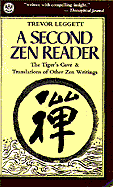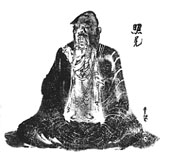|
The Tiger's Cave and Translations of Other Zen WritingsExtractFrom Yasenkanna: to remedy cases of over-tension:
I said : May I hear of the use of the So cream?
When this meditation is being done, there will be psychological experiences,
of a sudden indescribable fragrance at the nose-tip, of a gentle and exquisite
sensation in the body. Mind and body become harmonized, and far surpass
their condition at the peak of youth. Adhesions and obstructions are cleared
away, the organs are tranquillized and insensibly the skin will begin to
glow. If the practice is carried on without relapse, what illness will not
be healed, what power will not be acquired, what perfection will not be
attained, what Way will not be fulfilled? The arrival of the result depends
only on how the student performs the practices.
The meditator becomes gradually aware of the bodhisattva within him Synopsis
The first part, a commentary on the Heart Sutra, is illustrated by incidents
from behind-the-scenes in modern Japanese Zen monastery life. What happens,
for instance, when a terrible mistake is made during a solemn ceremony?
Introduction PART ONE
On the Heart Sutra a commentary by Abbot Obora of the Soto Zen sect
(contemporary) PART TWO
Yasenkanna (method of physical and spiritual rejuvenation) - an autobiographical
narrative by Zen Master Hakuin (18th century) PART THREE
The Tiger's Cave and other pieces PART FOUR
Zen by Takashina Rosen, Primate of the Soto Zen sect (contemporary)
PART FIVE
From a Commentary on Rinzai-roku classic, by Omori Sogen, Zen master,
fencing master, and master of the brush (contemporary) Review
Every page of this profoundly erudite book is written with compelling insight...There
are five sections, each reflecting in depth a different Zenic emphasis of
a particular Master or School of Zen ...The most important section is the
first, an inspired and inspiring commentary on the Heart Sutra ... the very
kernel of Mahayana Buddhism. |
 A SECOND ZEN READER
A SECOND ZEN READER